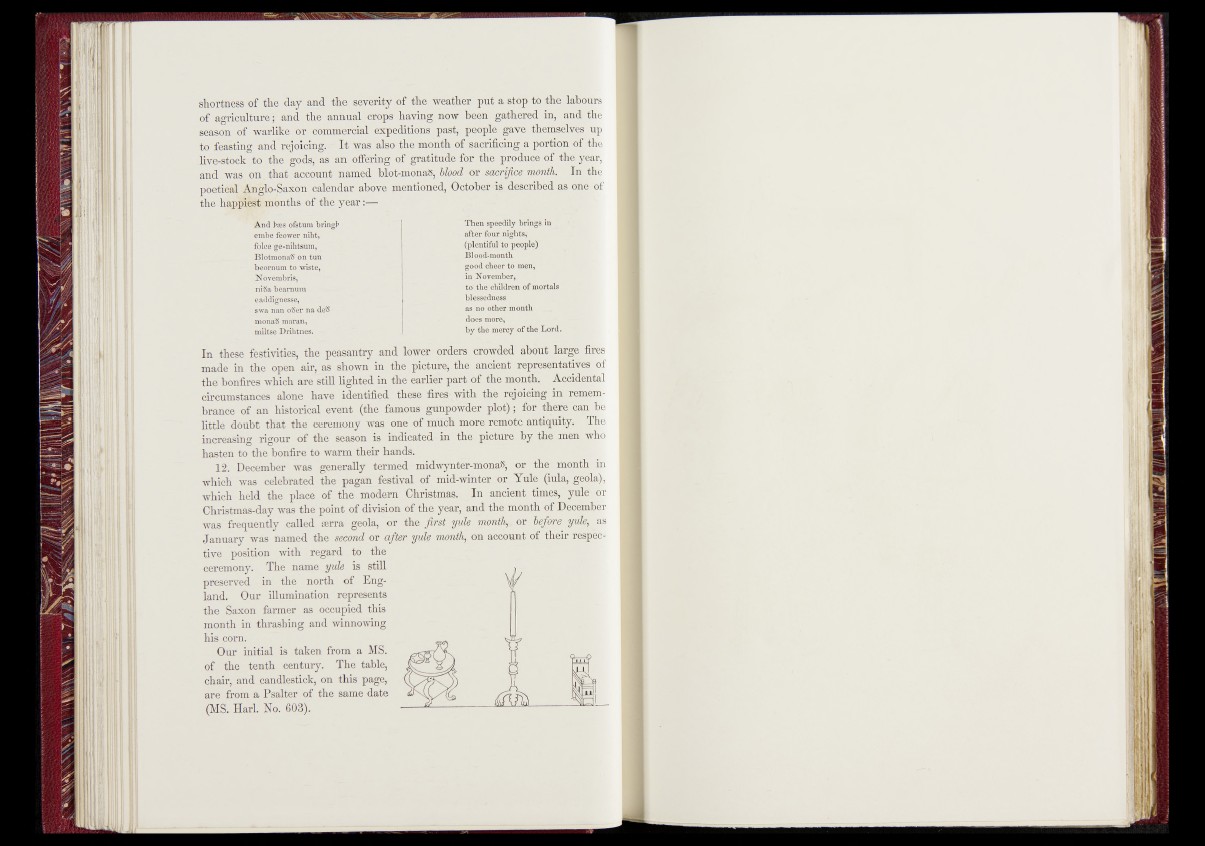
shortness pf the day and the v severity of the weajther put a stop t6;the lab e ls
of agriculture^ and the annual crops'-'-having now been-gathered in, and He
season of warlike or commercial expeditions past, people gave themselvfes||p
to feasting and rejoicing. It was also the month of sacrificing a of He
Jive-stock to the gods, as an offering of gratitude for the produce- o^th^vear,
and was on, that account named JaBtmonaS, blood- Or sacrifice'month.' In pie
poetieal -Jneto-Saxon calendar1 above mentioned, October us- described as ,ofi|| of
the happlltt months of the year :—
Ä.nd >$es ofitum bringt
embe feower niht,
folce ge-nihtsum,
Blotmona'8 on tun 1
beornum to -wiste,
„Novembris,
nrSa beamum -
eaddignesse,
swa nan o'Sér na déS •
niona^S maran,
miltse Dribtnes.
Then speedily brmgpjn^
after four, nights,'
(•pltnUffiFl o jpeople^'O
Blood-month
gpod ioheer to men,
.in_Ndyember,’’
to the'cBildren of mortals
■]3les.sedffe'8r, -
,as;no other, mon^tltt
does more,
by the mercy of the Lord
In these dfestraties, the peasantry and lower x^rsjcrowded aWut large |ire>
made in the open air, as shown in the picture, | | | ancient repfe^efimt^es of
the bonfires which are still lighted in the earlier part of tlio
circumstances alone have identified thSse fires-j^th.thl^ej'oicing S f o pcm-
Jbranee of an historical event (the famous ^.npowder plqt) ;/f ^ th |r e 'c a # b(!
little -doubt that the ceremony was one of antiqtiity. H e
increasing rigour of the season is indicatech-in the picture by the men who
hasten to the bonfire to warm their hands.
12. December was- generally termed'-unidwynter-mon^;or the ;month',iu
whichTwas celebrated the pagan festival .of'mid-winterlQL Yule^(rula,^^|Vs
which held the place of the-modem Christmas.' In anfientv^iincs,' jraiffifor
Christmas-day was the point of division of theyear, and tlie^^m h . of December
was frequently ,called aura- geola, or the first, !lS
January was named the second or after-yulet month, on account
tive position with regard to the
ceremony. The name^yuk is stiff
preserved in the north of England.
Our illumination represents
the Saxon farmer as occupied this
month in thrashing and winnowing
his com.
OuT initial is taken from a MS.
of the tenth century. The table,
chair, and candlestick, on this page,
are from a Psalter of the same date
(MS. Harl. No. 60S).